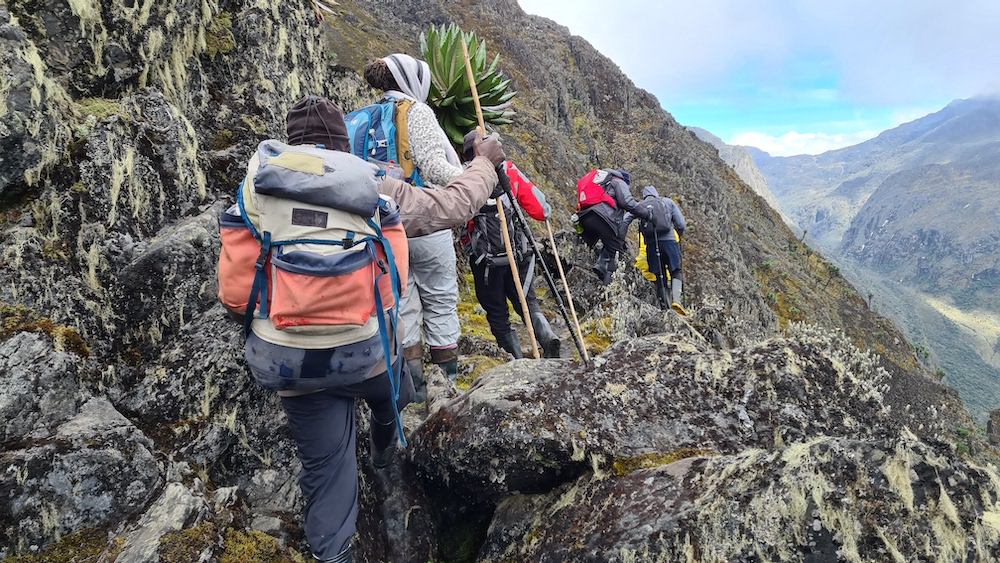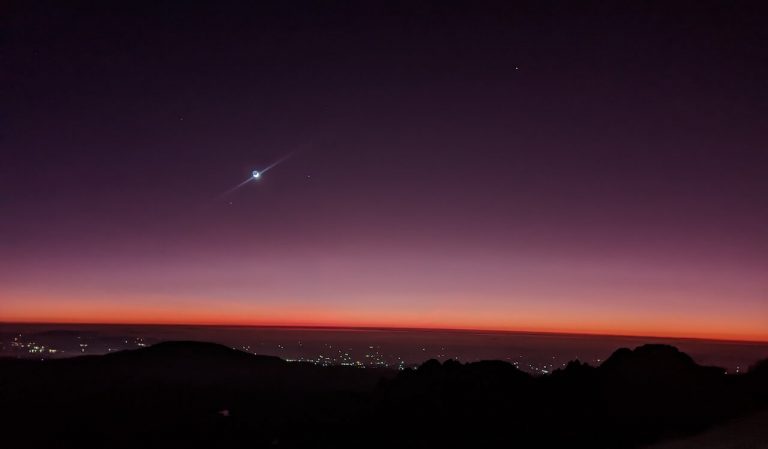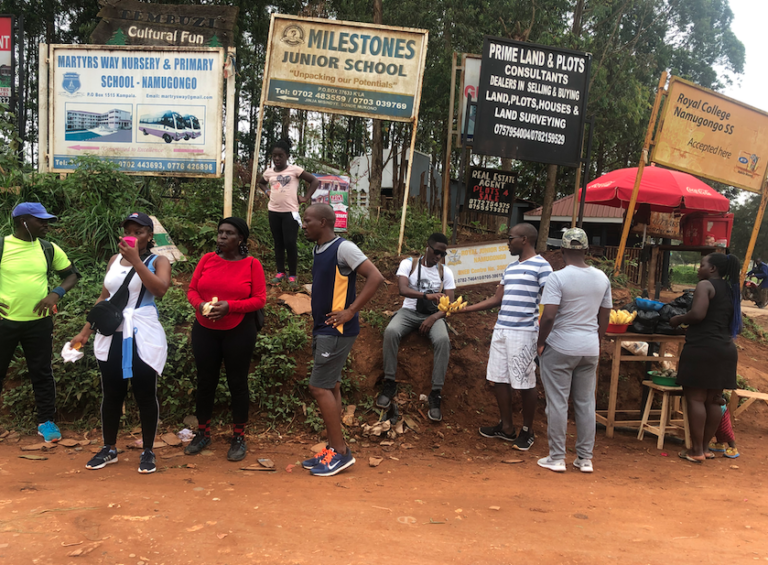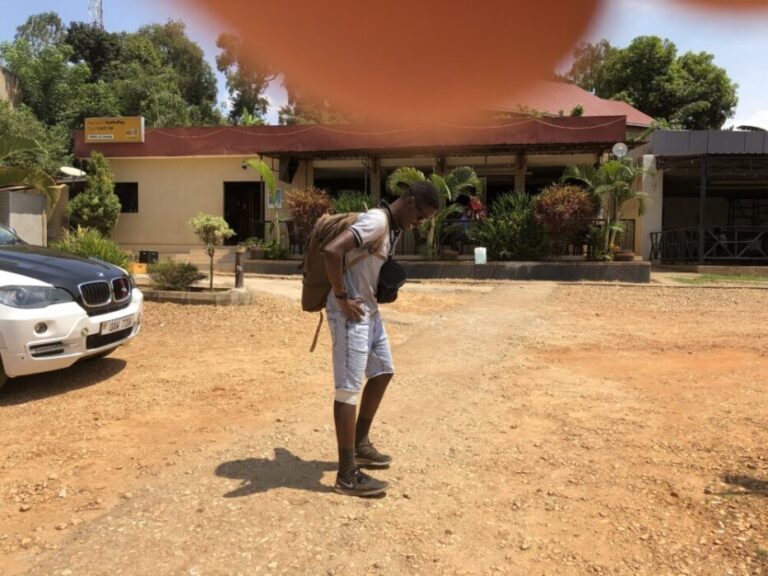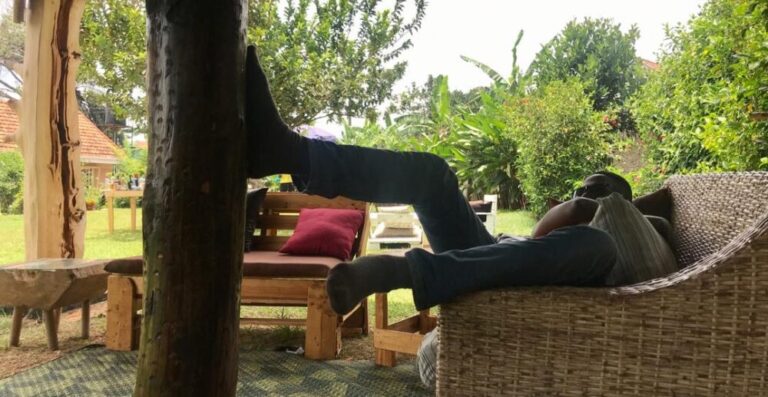Unlike the previous 5days, including our summit to Margherita peak and back to Elena hut for the second last night, we began the descent from the mountains of the moon.
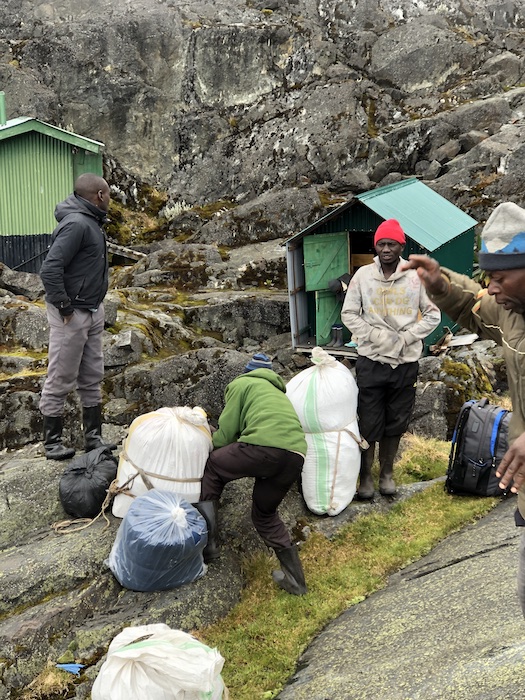
To let the cat out of the bag, descending a mountain takes less days than ascending. In our case, it took us 4nights to the summit and a 5th night when we descended from the peak to camp Elena.
Why it takes less days to descend?
In the first place, you’re descending so it takes you less time since you’re slightly faster and altitude doesn’t affect you the way it does when ascending.
Second, climbing a mountain as high as the Rwenzoris require you to take time and acclimatize, however, on descend, the weather doesn’t have much impact on your body. Meaning that you’re not affected the way it does when ascending.
You, therefore, can descend as fast as you can. Your body decides your limits. However, mountain Rwenzori is a mountain range meaning that even when you’re descending, you’ll also have to ascend several sections of this mountain.
Day 6 – Descending From Elena to John Maata
If you remember in my day 3 blog hiking mountain Rwenzori, we ascended from John Maata to Bujuku and the following day is when we ascended to camp Elena. However, on descend, we skipped camping at Bujuku hut meaning that we had skipped an extra night.
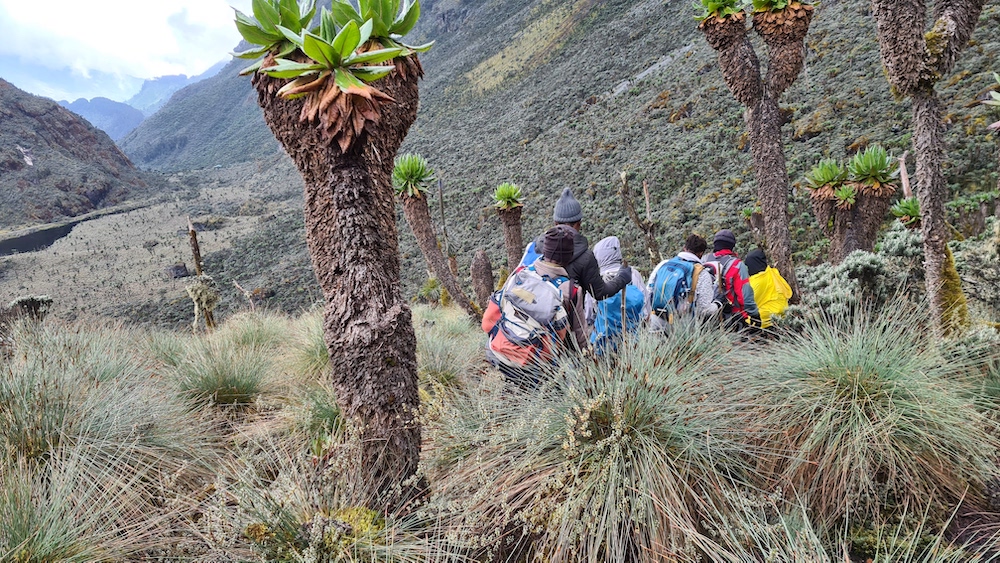
Descending from camp Elena is the most technical from my experience. Skimming on gigantic rocks and vertical sections of this mountain is the most challenging. Unlike other sections, this descend gives you some of the best movie-like sceneries with some of the best landscapes overseeing lake Bukuju, Mt. Speke and Mt. Baker.
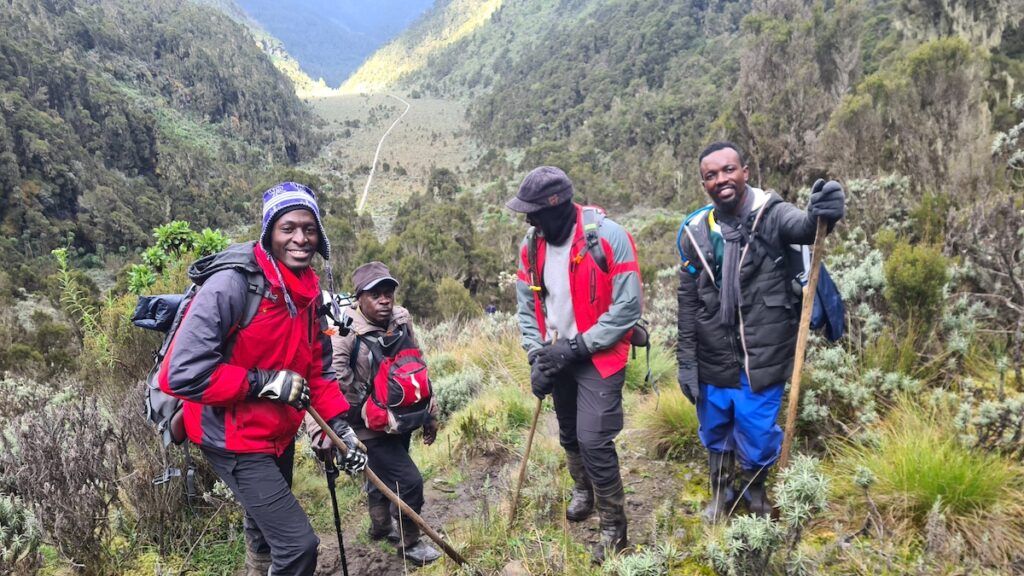
This trek took us nearly 10hours to get to John Maata where we spent our 6th night. It is here that I also got a chance to sit by a fire with the porters and guides before sleeping off.

To paint you a picture of our night at John Maata: Upon arrival, the chef had already put together a meal for us and since the exhaustion and hunger were beyond our control, we feasted.
Later in the evening between 7-10 pm, hikers had great conversations exchanging their experience on this whole trek up and down the mountain.
Needless to say, since we had a group of 4 other hikers at the back who summited the next day after us, our prayers and hopes were geared to them that they can make it to the top and back to camp Elena safely.
By this time, I was so fatigued, resting in my bunk bed and cold. I decided to later join the porters and guides on a fire they lit outside the dormitory for nearly an hour, before I returned to pay allegiance to my sleeping bag.
Before we all knew it, morning came after a safe and sound night. Breakfast greeted us as soon as we got up. I must mention that the night we spent at John Maata didn’t seem that cold, like that night we spent here on day 2. I don’t know if this was because we had been to a colder place or it was simply not cold.
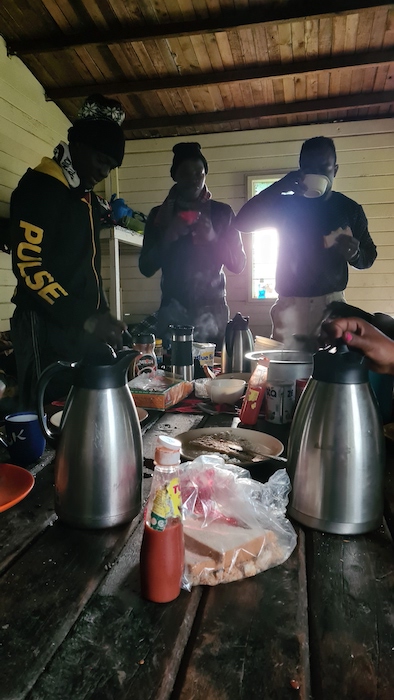
It is great to note that temperatures in the Rwenzori ranges at 3000m to 4000m ASL are roughly 10 to 15 degrees Celsius during the day and 2 to 6 degrees Celsius at night.
However, it gets very cold at 4000m to 5000m ASL (Elena to Margherita) where temperatures go between 1 to 12 degrees celsius during the day and -5 to 5 degrees celsius at night.
At the peak, it can drop to even -3 degrees Celsius during the day and gets windy too. You can witness the wind speed in this video I did when at the peak at 17:35.
Day 7 – Descending From John Maata to Basecamp
After our fun-filled evening at John Maata, the next morning, we had to further continue our descend. Ideally, we would have to descend to the next camp, Nyabitaba but we decided to further descend to the basecamp.
This whole idea was far fetched. Deep inside me, I imagined my day 1 experience ascending from basecamp to Nyabitaba, spending a night there, then ascending to John Maata the next day.
Now, it had flopped. The goal was to descend straight to basecamp a trek that I imagined would take me at least 12hours basing on the fact that my ascend to from Basecamp to Nyabitaba then Nyabitaba to John Maata took me 20hrs in total.
We set off at 9 am and down we went. The heather, bog, alpine moorlands and giant lobelias form the biggest part of this section (John Maata to Nyabitaba). Before I knew it, I had already seized a conversation with my Porter, Joachim.
Shockingly, he had a deep understanding of English, being an A level finalist and one eyeing to join the university to do an engineering degree, I was left with nothing but shock.
The night before, while at the fireplace, I shared that I wanted to descend to basecamp together with him the next day.
He and others were skeptical if I could manage his pace but he told them that he would slow down for me to catch up. I didn’t get to know about this conversation until the next day when at Nyabitaba for our 20min water break.
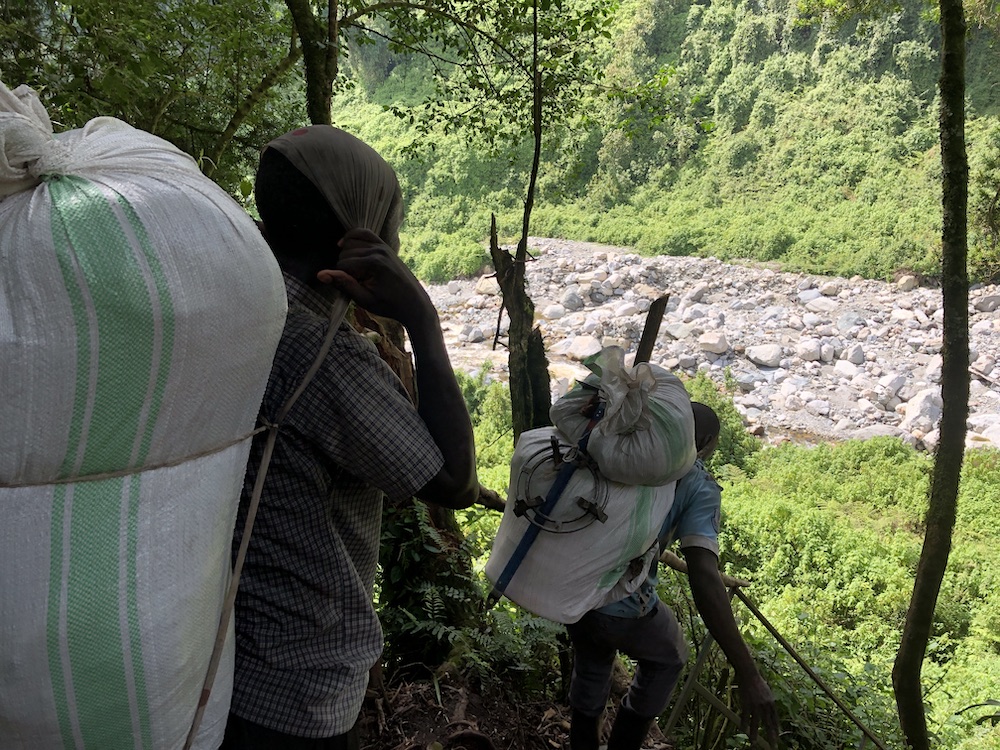
After about four hours, we were at Nyabitaba camp which is 2659m ASL, got a chance to take a 20min break and grab a bite to increase my sugar levels. Later continued to descend through an evergreen tropical hardwood forest, bamboo trees and shrubs. Expect to spot song birds, blue monkeys and water streams running down this beauty.
I didn’t feel the pinch of descending this mountain with my porter at his pace. At some point, he could turn back, watch me then proceed. Later he would ask if he is too fast for me, I could respond that the pace is okay and I can simply follow.
The breath through this section of the mountain is priceless. It’s freshness accompanied by nature all over can’t be traded for anything.
Through the thick shrubs, bamboo and technical sections we went. After what seemed like forever, we approached the park entrance gate. This is where we gate into Mt Rwenzori national park.
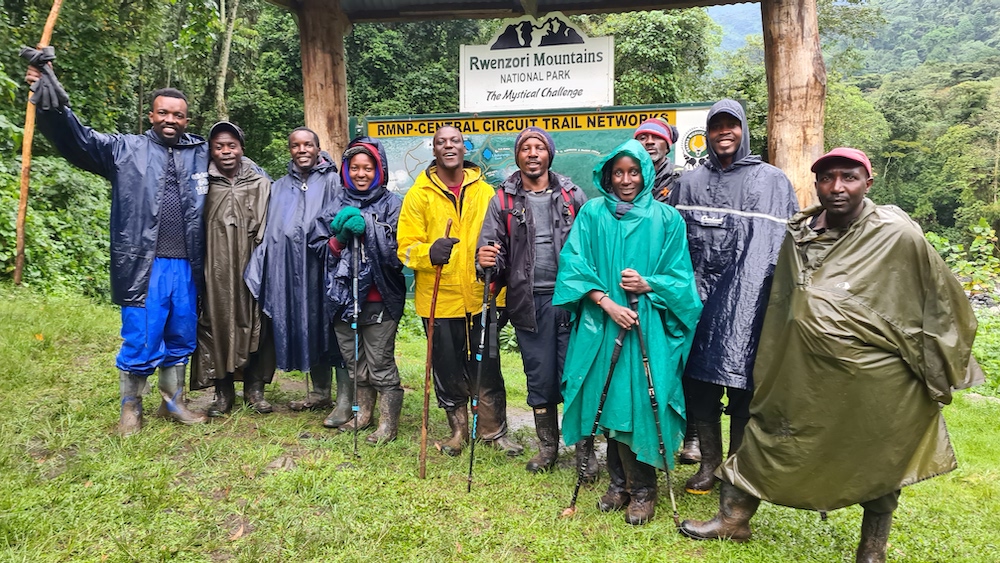
The team at the back could get a group photo opportunity while here. I missed being part of this though. On getting out, everyone gets the chance to sign in the “book of life”. That I was there, the testimonies and a certificate from the Wildlife Authority.
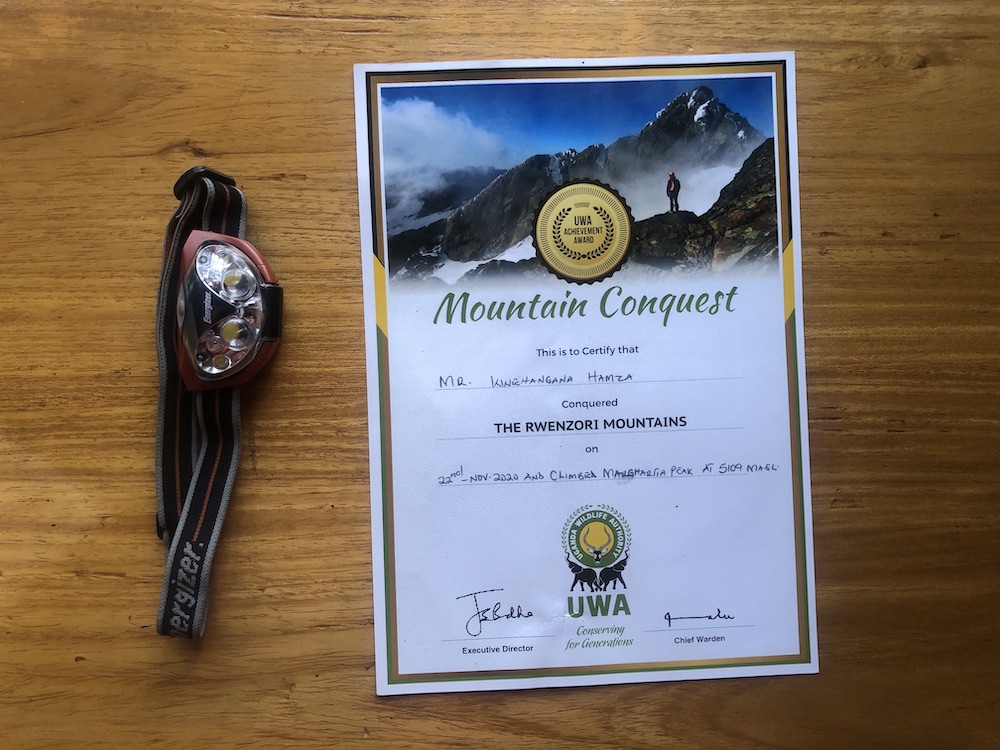
To sum up, it all seems impossible until it’s done. It took us another 4hours to descend from Nyabitaba to the basecamp. It feels great to be back from the mountains but again it feels like you’ve put the best part about being alive behind you.
If there is one thing to say, you’ve got nothing to lose. Go attack the Rwenzoris.
